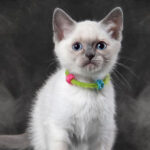Published in 1963, Cat’s Cradle stands as Kurt Vonnegut’s fourth novel and a searing example of 20th-century satire. Often lauded as a modern Mark Twain, Vonnegut’s societal critiques in Cat’s Cradle embrace broader societal values, mirroring Twain’s sharp wit but expanding its scope to encompass the collective absurdities of modern life. This novel delves into themes of science, religion, and the fragility of truth with Vonnegut’s signature blend of dark humor and poignant observation, solidifying its place as a cornerstone of satirical literature and a key work for understanding the anxieties of the nuclear age.
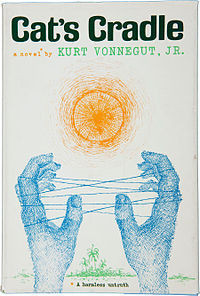 First Edition of Cat's Cradle by Kurt Vonnegut
First Edition of Cat's Cradle by Kurt Vonnegut
Jonah’s Quest and the Shadow of Hiroshima
Cat’s Cradle begins with the narrator, Jonah – a name deliberately echoing Melville’s Moby Dick and its own narrator, Ishmael – positioning himself as an observer seeking to chronicle a pivotal moment in history. Jonah’s initial intent is to document the American perspective on the day the atomic bombs were dropped on Hiroshima and Nagasaki. However, his quest quickly evolves into something far more profound, leading him down a rabbit hole of scientific responsibility and existential questioning. Vonnegut uses Jonah’s journey to explore not just the historical event, but the underlying human condition that allows for such events to occur, examining the distance between action and consequence, especially in the context of war and technological advancement.
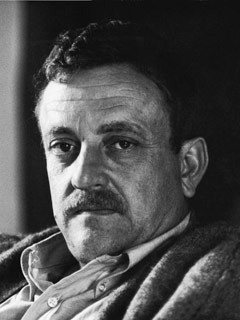 Kurt Vonnegut in 1963, author of Cat's Cradle
Kurt Vonnegut in 1963, author of Cat's Cradle
Vonnegut poignantly captures the unsettling ease with which humanity can inflict destruction, highlighting the disconnect between those who initiate violence and the devastating realities faced by its victims. This detachment is starkly contrasted with the potential moral reckoning that might arise from direct, face-to-face conflict, a discomfort often conveniently avoided in the detached act of dropping bombs from above.
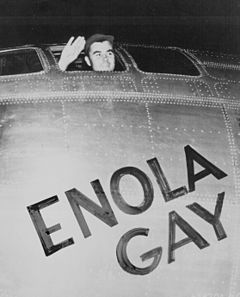 Paul Tibbets waving from Enola Gay, the plane that bombed Hiroshima
Paul Tibbets waving from Enola Gay, the plane that bombed Hiroshima
 Devastation of Hiroshima after the atomic bombing
Devastation of Hiroshima after the atomic bombing
The Hoenikker Family and the Sin of Science
Jonah’s pursuit of understanding leads him to the children of Felix Hoenikker, a fictional co-inventor of the atomic bomb. Hoenikker, a scientist detached from the ethical implications of his work, becomes a central figure in Vonnegut’s critique of scientific responsibility. His children – Frank, Angela, and Newt – each embody different facets of the legacy of their father’s morally ambiguous contributions to science. Newt, the diminutive and whimsical youngest son, reveals a critical anecdote that encapsulates a core theme of Cat’s Cradle. He recounts how, upon witnessing the successful atomic bomb test, a scientist, reminiscent of Robert Oppenheimer, lamented the “sin” created by their work. Professor Hoenikker’s chilling response, “What is sin?”, underscores his profound detachment and the moral vacuum at the heart of unchecked scientific pursuit.
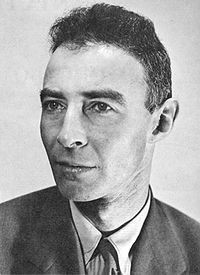 J. Robert Oppenheimer, key scientist of the Manhattan Project
J. Robert Oppenheimer, key scientist of the Manhattan Project
This pivotal moment reveals Hoenikker’s profound disconnect from the consequences of his actions. During the atomic bomb test, he is engrossed in playing “cat’s cradle,” a children’s string game. This image becomes the novel’s title and a potent symbol of Hoenikker’s, and perhaps humanity’s, detachment from the far-reaching implications of scientific advancements. The game, intricate yet ultimately meaningless, mirrors the complex and potentially pointless nature of scientific endeavors pursued without ethical consideration.
Ice-9 and the Absurdity of Creation
Vonnegut’s own experiences working for General Electric after World War II heavily influenced Cat’s Cradle. Tasked with humanizing GE’s scientists, Vonnegut witnessed firsthand the potential for scientific innovation to be divorced from ethical concerns. He recognized the inherent danger when scientific research, conducted with intellectual freedom but lacking moral grounding, could lead to technologies with catastrophic destructive potential if misused. Professor Hoenikker is loosely based on a GE scientist of Vonnegut’s time, who reportedly joked about creating a substance with world-altering consequences – a chilling precursor to Ice-9.
Ice-9, the fictional substance Hoenikker invents, becomes a central metaphor in Cat’s Cradle. Initially conceived as a whimsical intellectual exercise, Ice-9 possesses the terrifying ability to turn any moisture it contacts into solid ice. The implications are catastrophic and immediately apparent: a substance capable of freezing entire bodies of water and, by extension, the world. Ice-9 embodies the unforeseen and potentially disastrous consequences of scientific pursuits devoid of ethical foresight.
San Lorenzo and Bokononism: Religion Turned Upside Down
Jonah’s journey takes him to the fictional island of San Lorenzo, accompanied by Angela and Newt Hoenikker. There, he encounters the bizarre and darkly humorous religion of Bokononism. Bokononism, with its central tenet that all religions, including itself, are built on “foma” – harmless untruths – represents Vonnegut’s satirical take on organized religion and the human need for comforting fictions.
In San Lorenzo, Frank Hoenikker holds a position of power as Major General, serving the ailing dictator Papa Monzano. Frank, poised to inherit leadership, further illustrates the Hoenikker family’s entanglement in worldly affairs, albeit in a comically absurd context. Throughout his time on the island, Jonah uncovers the pervasive influence of Bokononism, a forbidden religion secretly practiced by nearly everyone, and learns that each Hoenikker sibling possesses a fragment of the deadly Ice-9.
Vonnegut uses Bokononism to explore the human tendency to create meaning and structure, even in the face of existential absurdity. Bokonon, the mischievous founder of the religion, openly acknowledges the fictional nature of his teachings, yet these “lies” provide comfort, community, and a framework for navigating a meaningless world. This paradoxical approach to faith questions the nature of truth and belief, suggesting that sometimes, comforting fictions may be necessary for human survival.
Vonnegut’s own evolving views on religion, ranging from belief to agnosticism to atheism, are reflected in the nuanced portrayal of Bokononism. In Cat’s Cradle, God is not necessarily denied, but rather depicted as indifferent, having completed his creation and now largely absent from human affairs. This “hands-off” deity leaves humanity to grapple with the consequences of its own actions, a terrifying premise in a world capable of self-destruction.
A Cautionary Tale for the Modern Age
Cat’s Cradle is not a condemnation of science, religion, or government in isolation, but rather a wickedly satirical depiction of their interconnected flaws and potential for misuse. Vonnegut’s genius lies in his ability to present these complex issues with humor and accessibility, making Cat’s Cradle a profoundly cautionary tale for humanity. The novel serves as a reminder to be mindful of the potential ramifications of our desires and creations, especially in an age of rapid technological advancement and shifting moral landscapes.
Vonnegut masterfully uses satire to expose the absurdity of human endeavors, from scientific pursuits divorced from ethics to religious beliefs built on comforting lies. Cat’s Cradle encourages readers to question authority, challenge conventional wisdom, and recognize the delicate balance between progress and destruction. It is a call for mindful action, urging humanity to approach its creations with a sense of responsibility and a recognition of the interconnectedness of our world.
Like many readers, my first encounter with Cat’s Cradle was in my youth, and I found its dark humor and rebellious spirit deeply resonant. It reinforced a youthful skepticism towards established norms and societal structures, echoing a sentiment similar to Mark Twain’s evolving perspective on his own father’s wisdom. The novel’s enduring appeal is evident in its continued relevance to new generations. As a friend recently shared, her daughter, at sixteen, has found Cat’s Cradle to be her favorite book, highlighting its timeless themes and Vonnegut’s enduring voice.
Cat’s Cradle remains a vital and thought-provoking read, prompting readers to unravel the “string game” of existence and contemplate humanity’s precarious place within it. It is a novel that stays with you, prompting reflection long after the final page is turned.

